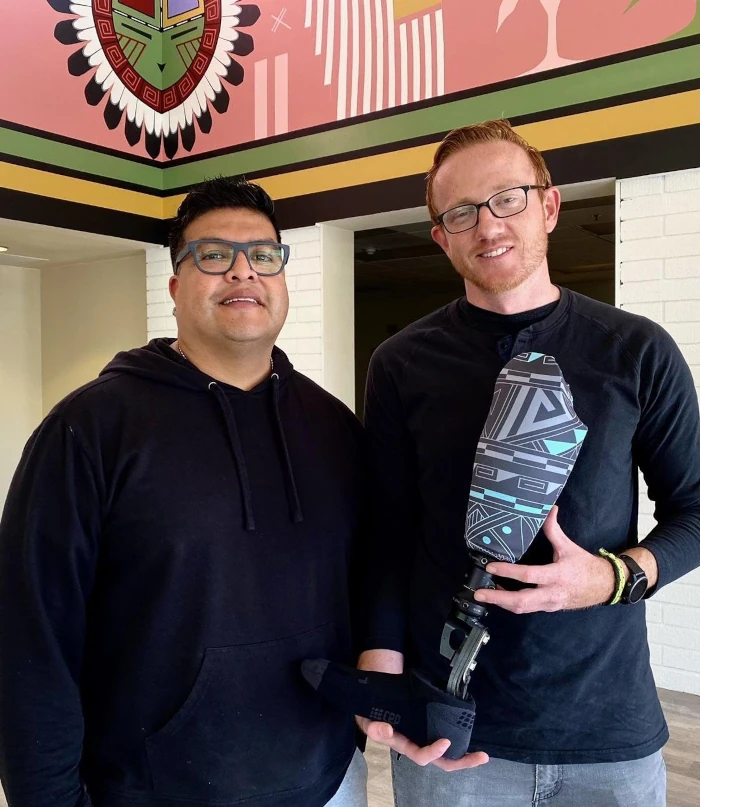
Duane Koyawena didn’t take art too seriously growing up. He picked up some skills from his dad and took some classes in high school, but he never thought of himself as an artist.
“I knew I was pretty good at it, because my friends would ask if they could keep some of my drawings,” says Koyawena, who belongs to the Hopi Tribe. “Some of the teachers, or even the school janitor, would ask me: ‘Can I have this? Can I show it?’”
These days, people are showing Koyawena’s art in strikingly personal terms—on their prosthetic legs. His Hopi-inspired socket designs are available to clients at Next Step Prosthetics in Flagstaff, Arizona.
Next Step’s owner, certified prosthetist Mike Kayser, proposed the idea after seeing some of Koyawena’s art on exhibit at the Museum of Northern Arizona. His clinic serves many amputees from the nearby Hopi Tribe and Navajo Nation, and Kayser spotted an opportunity to boost patients’ morale while altering the community’s perceptions of limb loss, which affects Native Americans at two to four times the national average.
“A lot of the symbolism [in Hopi art] has a connection for someone with an amputation, because it represents healing, having the strength to endure, praying for a better life,” Koyawena says. “Putting all that into a prosthetic leg that helps people get their mobility back made a lot of sense. And it helps me celebrate who I am, and all the people of the Hopi Tribe.”
Koyawena has experienced his culture’s healing effects firsthand. After battling depression and substance abuse during his 20s, he found renewal by embracing centuries-old Hopi values and infusing those themes and symbols into his art.

“I didn’t have any desire to learn about my culture when I was growing up,” he explains. “It just didn’t make sense to me. But when I started coming out of those hard times, it began to sink in. The foundation of our culture is good life, good health, good heart. It’s about being there to help each other, being loving. That’s the purpose of the Hopi people. So putting that message into a prosthetic socket and offering it to people who are struggling, it really meshed well.”
Prosthetic legs aren’t the first unorthodox outlet for Koyawena’s work. His art has long added beauty to skateboards, custom-painted shoes, mountain-biking gloves, and electric guitars. One of his most well-known pieces is Hopi R2, which Koyawena bills as “the first indigenous droid.”
Last fall, Koyawena completed a mural in the lobby of Next Step Prosthetics, providing a Hopi welcome of strength and healing to every person who enters the clinic.
“It’s not always the plan to do something that really helps others,” he says. “But sometimes that’s just the way it falls.”
View Duane Koyawena’s artwork at dkoyawenaarts.com and on Instagram @duane_koyawena_arts. Visit Next Step Prosthetics at nextsteppx.com.




